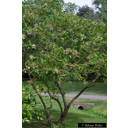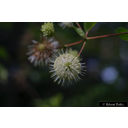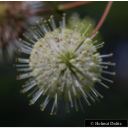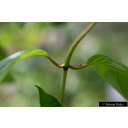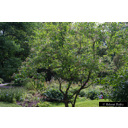Wissenswertes zu diesem Pflanzenindivuduum
Cephalanthus occidentalis L. 1753
Rubiaceae
- Rötegewächse (APG IV)Knopfbusch
Akzessionnummer: EG-G-022-16280
Pflanzjahr: 2001
Patenschaftstext: Für Markus Hartenstein, 2016
Taxonkonzept: The Plant List (2014), version 1.1
Verbreitung: östl. Kanada; USA: Nordosten, Nordost-Zentral, Südosten, Florida, südl. Prärie-Staaten, Südwesten, Kalifornien; Mexiko, Westindien
Größe: 0 (m)Blütezeit: VII - VIII
Cephalanthus occidentalis L. - Accepted: Cephalanthus occidentalis L. bei Zander 2008; Familie: Rubiaceae (Zander 2008)Cephalanthus occidentalis L. - Accepted: Cephalanthus occidentalis L. bei The Plant List (2010); Familie: Rubiaceae (APG III)Cephalanthus occidentalis L. - Accepted: Cephalanthus occidentalis L. bei The Plant List (2014), version 1.1; Familie: Rubiaceae (APG III)Cephalanthus occidentalis L. - Accepted: Cephalanthus occidentalis L. bei The Plant List (2010); Familie: Rubiaceae (APG IV)
Erhardt, W., Götz, E., Bödeker, N. & Seybold, S. (2008): Der große Zander. Enzyklopädie der Pflanzennamen. Band 2. Arten und Sorten. Eugen Ulmer KG, Stuttgart (Hohenheim), 18. Aufl., 2103 S.; The International Plant Names Index (2009). Published on the Internet http://www.ipni.org; Courtesy to IPNI, 2009. Exported from IPNI at date: 2009-09-22 20:17:51;
Diese Webseite verwendet Google Maps, um Karten und Standorte von Pflanzen in den Hohenheimer Gärten anzuzeigen. Dadurch werden unter Umständen Daten an Google weitergeleitet, was mit einer Verarbeitung Ihrer personenbezogenen Daten verbunden sein kann. Die Datenschutzerklärung von Google finden Sie hier: Datenschutzerklärung von Google

